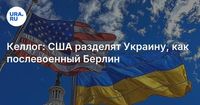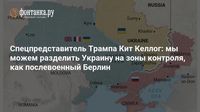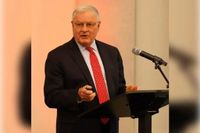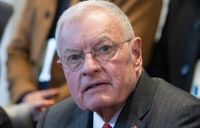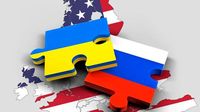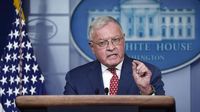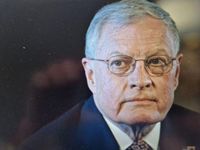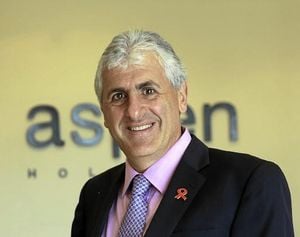In a striking proposal, Keith Kellogg, the U.S. President's special representative for Ukraine, has suggested that Ukraine could be divided similarly to post-war Berlin as part of a potential peace agreement. This idea, articulated in a column published in The Times on April 11, 2025, has sparked considerable discussion regarding the future of the war-torn nation.
Kellogg's vision for Ukraine's resolution involves establishing zones of influence akin to those that existed in Berlin after World War II, where various powers maintained control over different sectors. He noted, "It could look almost like what happened with Berlin after World War II, when you had a Russian zone, a French zone, a British zone, and an American zone." This analogy underscores the complexity of the situation in Ukraine, where territorial disputes and military presence are deeply intertwined.
According to Kellogg, the eastern regions of Ukraine would remain under Russian control, while British and French forces could establish a presence in the western parts of the country as part of a "guarantee mission." Importantly, he clarified that the United States would not deploy ground troops but could play a role in coordinating these international efforts. He suggested a buffer zone of approximately 18 miles between the Ukrainian and Russian armies, aimed at minimizing direct confrontations.
In his remarks, Kellogg emphasized that the presence of European military formations should not be perceived by Moscow as a direct threat. He explained that Ukraine is sufficiently large to accommodate multiple military contingents, which could help maintain the ceasefire and support stability in the region. He stated, "You look at the map and create, for lack of a better term, a demilitarized zone. Pull both sides back 15 kilometers each, that's 18 miles." This strategy aims to lay the groundwork for a more peaceful coexistence between the conflicting parties.
However, Kellogg acknowledged the challenges ahead, including the possibility that Russian President Vladimir Putin might reject the proposal. He noted that the next step after a ceasefire would likely involve elections in Ukraine, a process that has been delayed for nearly a year. Kellogg remarked, "I think Zelensky is ready to do this as soon as a ceasefire is achieved and a defined decision is worked out. But this is a task for the Ukrainian people in the Ukrainian parliament, not for us."
His comments come amidst a backdrop of diverging opinions within the Trump administration regarding the best approach to ceasefire negotiations. Earlier, another special representative, Steve Witkoff, had suggested that recognizing Russia's control over newly acquired regions might be the quickest route to peace. Kellogg, however, countered this perspective, asserting that while Ukraine is open to negotiations regarding disputed territories, it would never agree to unilaterally cede full ownership to Russia.
In a subsequent post on social media, Kellogg expressed concern that The Times misrepresented his comments regarding the division of Ukraine. He clarified, "I was speaking of a post-ceasefire resiliency force in support of Ukraine’s sovereignty. In discussions of partitioning, I was referencing areas or zones of responsibility for an allied force (without U.S. troops). I was NOT referring to a division of Ukraine." This clarification highlights the sensitivity surrounding the discourse on Ukraine's territorial integrity and the implications of any proposed solutions.
The ongoing conflict in Ukraine has drawn international attention, with many countries closely monitoring developments. Kellogg's proposal, while unconventional, reflects a growing recognition that a multifaceted approach may be necessary to achieve lasting peace. The involvement of international forces could provide a framework for stability, but it also raises questions about sovereignty and the long-term implications for Ukraine's future.
As discussions continue, the situation remains fluid, with various stakeholders weighing in on the best path forward. The complexities of the Ukrainian conflict are underscored by the historical precedent of Berlin, where divided control ultimately led to significant geopolitical shifts. Whether Kellogg's proposal will gain traction or face opposition remains to be seen, but it undoubtedly adds a provocative dimension to the ongoing dialogue about Ukraine's future.
In the meantime, the humanitarian crisis in Ukraine persists, with millions displaced and in need of assistance. The international community's response will be critical in shaping the outcome of the conflict and ensuring that the voices of the Ukrainian people are heard in any resolution.
